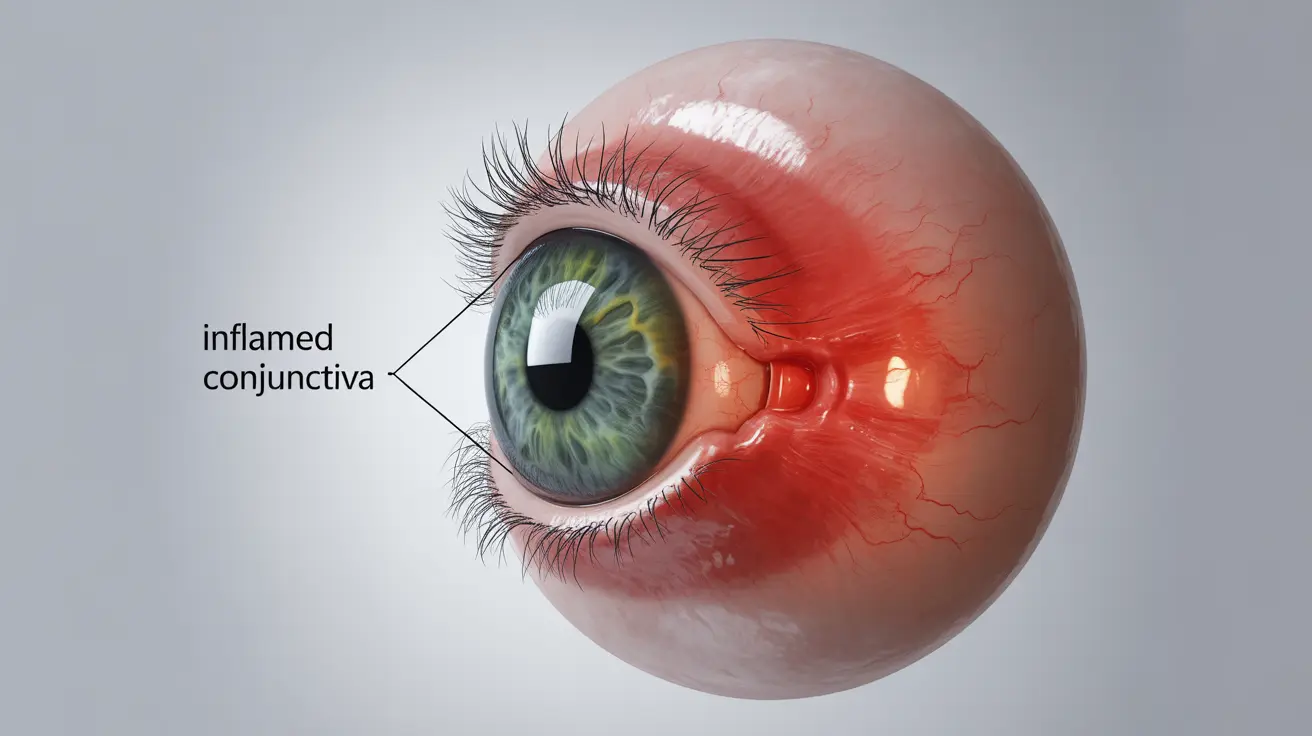Pink eye, medically known as conjunctivitis, is a common eye condition that causes inflammation of the conjunctiva - the thin, clear tissue covering the white part of the eye. While there are many myths surrounding how pink eye spreads, it's important to understand the real causes and transmission methods of this condition.
In this comprehensive guide, we'll explore the facts about pink eye transmission, debunk common misconceptions, and provide evidence-based information about prevention and treatment.
Understanding Pink Eye and Its True Causes
Pink eye can be caused by several different factors, each requiring specific treatment approaches:
Viral Conjunctivitis
The most common form of pink eye is viral, typically caused by the same viruses responsible for the common cold. This type is highly contagious and spreads through direct contact with infected eye secretions or respiratory droplets.
Bacterial Conjunctivitis
Bacterial infections cause another form of contagious pink eye. These infections can result from exposure to bacteria through contaminated hands, objects, or close contact with infected individuals.
Allergic and Irritant Conjunctivitis
Environmental allergens, pollution, chemicals, or other irritants can cause non-contagious forms of pink eye. These types result from an allergic reaction or direct irritation rather than an infection.
The Truth About Flatulence and Pink Eye
Despite popular myths and urban legends, you cannot get pink eye from flatulence. This misconception likely arose from misunderstanding how pink eye spreads and perhaps as a joke. Here's why this myth is false:
- Clothing acts as an effective barrier
- Bacteria from intestinal gas cannot travel far enough to cause infection
- Pink eye-causing organisms require direct contact with the eye
- Most bacteria in flatulence are not the type that cause eye infections
How Pink Eye Actually Spreads
Understanding the real transmission methods of pink eye is crucial for prevention:
- Direct contact with infected eye secretions
- Touching contaminated surfaces then touching your eyes
- Exposure to respiratory droplets from infected individuals
- Sharing personal items like towels or eye makeup
- Swimming in contaminated water
Prevention and Protection
To prevent pink eye infection, follow these evidence-based practices:
- Wash hands frequently with soap and water
- Avoid touching or rubbing your eyes
- Never share personal eye care items
- Replace eye makeup regularly
- Clean contact lenses properly
- Avoid touching your face with unwashed hands
Frequently Asked Questions
Can you get pink eye from a fart or flatulence?
No, you cannot get pink eye from flatulence. This is a myth. Pink eye is caused by specific viruses, bacteria, allergens, or irritants that require direct contact with the eye or mucous membranes to cause infection.
What are the main causes of pink eye (conjunctivitis)?
The main causes of pink eye include viral infections (most common), bacterial infections, allergic reactions to environmental triggers, and irritation from substances like chlorine or air pollution.
How is pink eye contagious and how does it spread from person to person?
Infectious forms of pink eye (viral and bacterial) spread through direct contact with eye secretions, contaminated surfaces, or respiratory droplets. Transmission occurs when infected material comes into contact with the eyes.
What are effective ways to prevent getting or spreading pink eye?
Effective prevention methods include frequent hand washing, avoiding touching your eyes, not sharing personal items like towels or eye makeup, and maintaining good hygiene practices.
Is allergic or irritant-induced pink eye contagious like viral or bacterial pink eye?
No, allergic and irritant-induced pink eye are not contagious. Only viral and bacterial forms of conjunctivitis can spread from person to person. Allergic and irritant pink eye are reactions to environmental factors.




